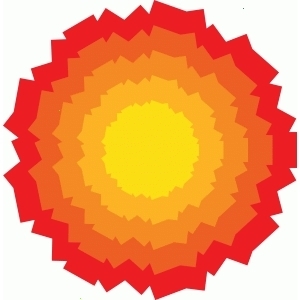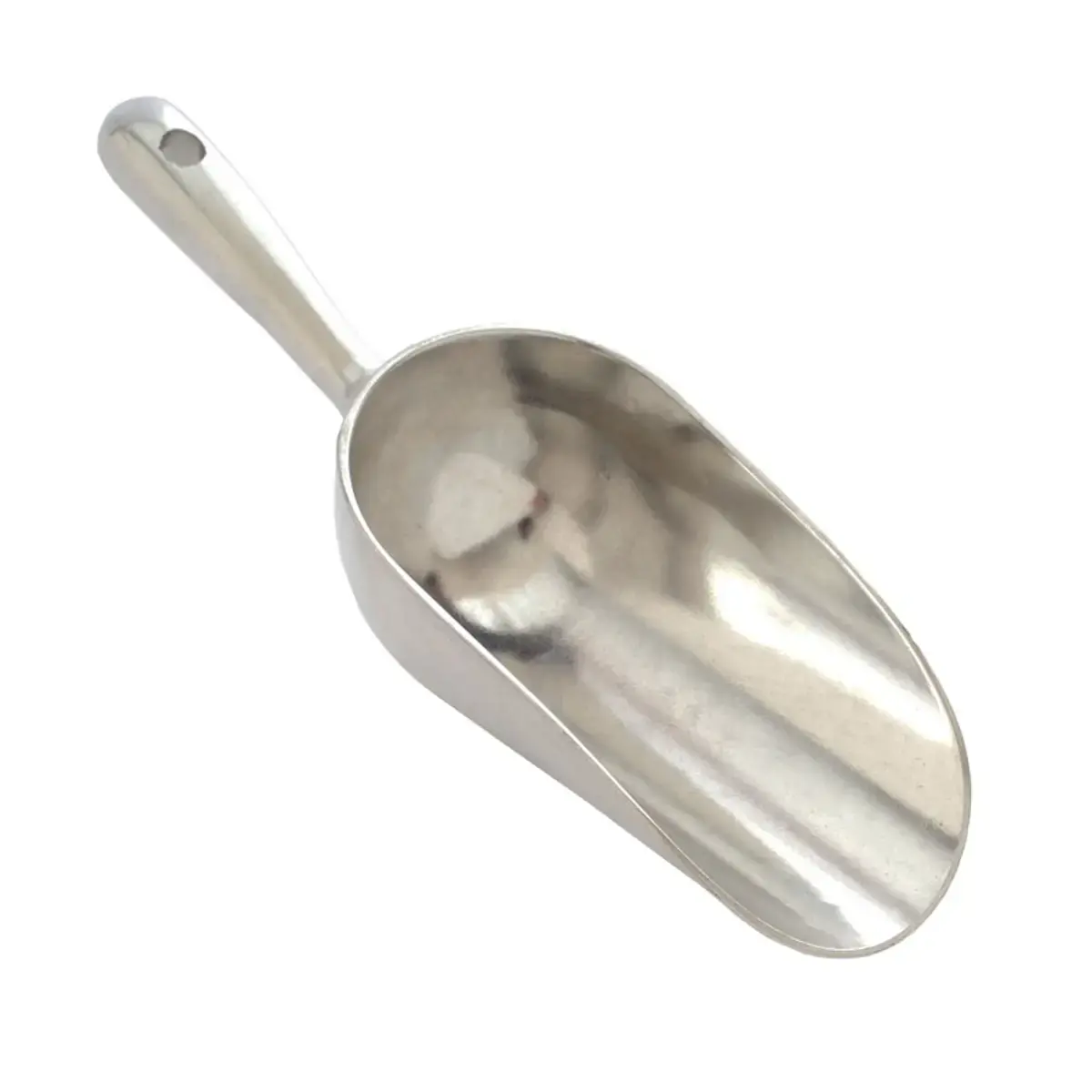Gas stoves fill the air in your home with particulate matter (pm), which has been found to increase cancer risk in the long term.
So next time you buy a stove, consider choosing an induction stove.
Btw, gas stoves being better or faster than induction is a myth. They have certain specific advantages, but they are actually slower.
Obligatory Technology Connections video:
https://www.youtube.com/watch?v=eUywI8YGy0Y
We swapped out a gas for induction, it’s amazing to be able to put the temp down below very hot. Also very responsive to power changes, and can wipe clean.
The studies I read, there was no ventilation / exhaust fan. The point was that low income households using these stoves often don’t have proper ventilation and it makes them dangerous. I didn’t find much evidence that using them with proper ventilation is actually a serious problem.
Further, cooking releases all sorts of chemicals from incomplete combustion in the air if something is burning, as well as the toxic chemicals release from nonstick cookware at very high temperatures, so cooking without ventilation is bad for your health would be the message I’d take away. I find most people are completely unaware of the hazard.
the maillard reaction causes cancer. I’m still not boiling my beef.
Photons cause cancer so I guess I may as well do nothing at all.
The few times I have prepared meat while trying to minimize the maillard reaction, it was still quite tasty.
That said, I agree that cancer risk is relative, and you can’t avoid all risk, even if you are happy to try.
I hear sous vide steak can be quite tasty.
I hear sous vide steak can be quite tasty.
It is the best way to prepare steak, but you still need to sear it afterwards. The steak can be cooked to a perfect medium-rare all the way through… But you still need to throw it on an ultra hot skillet with some butter and rosemary afterwards, to add the crust to the outside.
Also, gas stoves increase the risk of asthma.
I’ve always cooked on radiant electric (not induction) stoves, but gas stoves are amazing. Literal fire just works like nothing else. Faster cooking != Better cooking, why are you conflating them?
I’ve never lived in a closed up efficient new house either, those seem like anything you cook would be problematic. All cooking releases something.
Will almost certainly stick with electric personally (whole house is electric only) but if I had an unlimited budget it would be gas stove, big whomping vent fan, and ovens with both steam and fan.
Induction worries me because we had an induction plate and it made a terrifying shrill noise, I worry that the high end ones do the same but we can’t hear it. Which seems awful for the dogs and cats.
I’ve got a gas stove and a highly inefficient house. I recently got an air quality detector and yeah, it goes off every time I cook anything on the stove. Not so much if I use the oven.
I’m pretty sure the premise is correct… though unsure as to the degree. I would get an induction stove in a heart beat. Just… you know… cost and all. (Buy the stove, update my wiring to not suck where the stove would go, things like that)
Does this apply if you use extraction?
I’ve had induction for many years, but I really want a combo with both. Making wok on induction is crap as the sides don’t get hot at all. I also have a hot spot in the center of all frying pans which is annoying when frying bigger things or several things at once.
My dream is a Gaggenau or Bora top with one side induction and one side gas. I already have the mid extractor with outside piping, so no recirculation.
I just cannot justify the $10k price tag and nobody else makes it with a fan in the middle.Appliance repairman here. What I tell my clients about gas in general is that: 1. When natural gas burns it create CO. 2. There is a none zero chance the thing can blow up.
Electric cooking appliances have an absolute zero chance of either of these two things happening.
I try to get people to switch to electric for these reasons some just like the aesthetic of cooking on gas.
a non-zero* chance
C02 isnt the only dangerous chemical.
And most peoples electricity generates huge amounts of GHGs
Just pointing out the person you replied to said CO which is carbon monoxide, not CO2
The lack of formatting in their comment was confusing.
That said, you’re right that CO (or CO2) aren’t the only harmful outputs of combustion.
We like to see it - fire, heat.
We like using pans that may not be induction friendly.
I absolutely agree. I’m happy to switch to a new technology as long as it performs at least as well as my current implementation.
I have a few cast iron and carbon steel pans, but most of my cooking vessels are thick copper (not copper inserts, full 3mm or more copper). Copper pans are superior to any other material (unless you prioritize cost) and are sadly incompatible with induction.
Don’t even talk to me about electric element (non induction) stoves, they’re garbage for heat control.
Did you know that the vast majority of electric stovetops aren’t induction stovetops and you can use any pan you like on them? Personally, I would rather not breathe in carbon monoxide.
Ceramic stoves also work on other types of pans and emit a bright red glow when they’re hot. However, they are less efficient.
They are ass for trying to control the temperature of your pan.
Regular old coil electric stoves will be fine with, for instance, your old rough-bottomed cast iron pan. And despite no flame, the coils glow red hot like a horseshoe at a blacksmith’s, to hit that emotional spot.
There is a little learning curve: they heat up and cool down more slowly, which can be a plus if you work with it.
Note: If you have spilled, especially grease, be sure to lift the whole stovetop to clean underneath, nobody taught me that at first.
Cast iron works great on induction though.
We like to see it - fire, heat.
Exact reason why I built a fire in my kitchen. Gives that camping feeling
Instructions weren’t very clear, now my house is burning down. Is there a good way to vent the smoke next time?
I just get a new house after
Our new-build house came with a gas stove+oven. Our overhead microwave does vent to the outside of the house so hopefully it helps a bit. The worst part is the oven’s vents face the front, so the fumes literally go up to your face if you’re standing in front of it. So when we use the oven, we try to keep distance and hope the the microwave vent sucks up as much fumes as possible.
Overhead microwaves are terrible at venting. Lots of places don’t allow over the range microwaves over gas stoves in their building code. If you can afford to do so, consider getting a proper hood fan installed
Yup, I’m definitely looking into upgrading to a proper hood fan in the near future.
Next time you buy a stove, consider a scheffler dish
We really shouldn’t be using electricity for applications like that
Huh TIL. Thats cool
https://solarcooking.fandom.com/wiki/Scheffler_Community_Kitchen
Apologies for the fandom link
Nah, fandom is one of the best links on this subject
I’m sure this wiki page is fine and very useful, but fandom itself is not a very good place to host it. Thats all I meant by that.
They have certain specific advantages, but they are actually slower.
This entirely depends on the stove. Consumer-lever stoves? Sure, definitely. Commercial stoves? Probably not. Commercial stoves put out 3-4x the BTUs of a high-end consumer stove, and usually can’t be installed in a home because they require significant shielding around them (so you don’t burn a building down) and a very high flow hood. The highest-end Wolf range has a single burner that has a maximum output of 10,000BTU, and costs a whopping $17,000; a fairly basic range top for a commercial kitchen has six burners that can all output 32,000BTU, and costs about $3700. For stir-frying specifically, you can get a single ring wok burners outputting 92,000-125,000BTU starting at about $700 for natural gas (and a helluva lot more if you use LP).
Unfortunately, I can’t find a solid conversion between gas and induction stove capabilities.
Oh, and FWIW - if you live somewhere with an unstable power grid, a natural gas or LP stove will continue to function when the power is out, albeit you’ll need to light it manually. We lose power fairly regularly due to storms–usually only a day at a time, but sometimes as long as 3-4 days–and it would be a real hassle to have all electric appliances when there’s no power.
1 kW is 3412 BTU/h (=BTUs)
Most induction stovetops have a boost function with around 3-4 kW (that’s about 13000 BTUs).
BUT contrary to a gas stove top, almost all of the energy is actually put into the pot instead of the surroundings (only 30-40% of the energy from a gas stove is used to heat the pot). Meaning that a 4 kW induction cooktop should be comparable to a 40’000 BTUs gas stove (single burner).
Okay, good deal. So, in theory, an induction stove that’s 3500W should be approaching the heating ability of a typical commercial range.
Yes, and you can test it pretty easily by just seeing how much faster a pot of water boils on induction, on-par with the boiling times of commercial burners.
Also, in a commercial setting, induction stoves cook just as effectively with less energy which means they don’t put out nearly as much heat to the environment. For a chef, its the difference between working all day in 90-degree spaces to 70-degree AC. I’m an engineer who works on a lot of commercial kitchens (among other things), and our chefs love the electric kitchens we’ve delivered.
When you’re cooking for work, 8+ hours a day, being comfortable while you do it is a major game changer.
The other thing they enjoy is the level of control and consistency - many professional induction ranges will let you control on temperature, which means you can quickly adjust to specific values in order to, say, sear a steak at 500, then finish it at 300 until it hits the desired internal temperature.
4 kW induction cooktop should be comparable to a 40’000 BTUs gas stove (single burner).
So this is 4000 watts? What household circuit can support that?
Uhhh, tons of people in Europe are on 240V 3 phase power.
My oven is 3100W and that is just fine. 3 phase consumer induction cooktops can easily go that high or higher.
Once my 3 phase charging pole is put in, my car will charge at >10000W on a household circuit.
A random Better Homes and Gardens article clocks a 2000 square ft (185 square meters) home with central air conditioning at nearly 19,000 watts.
https://www.bhg.com/home-improvement/electrical/how-to-check-your-homes-electrical-capacity/
So I think most homes could handle that in general, but I don’t know about specific wiring requirements to handle that kind of power draw from just the kitchen. So do these things require that level of retrofit?
Plenty can. Just need a 240v 30a outlet or higher
Which isn’t a thing in the states anyway.
I’m confused as to why you’re so confident. The US has 3-phase power and homes get 120V from line 1 to the neutral (split-phase). If you use line 1 and 2, you get 240V. More than enough to power an oven. This is the case in every modern residential home in the US because they have a national building code.
Yes, I’m aware that you can do this but there are not readily available outlets throughout a home for this, lol. Yes, let me move my stove or dryer so I can plug my wok induction stove in.
…You do know that an oven needs a dedicated outlet, yes? As in, if you don’t have a 30-50A receptacle in your home, one must be installed in order for you to have an oven. All new builds and most existing buildings have this dedicated outlet.
Edit: I see that you’re using stove and oven separately. I am talking about a range (oven and stovetop combined), since where I live these are most common and “oven” and “stovetop” are roughly interchangeable. Apologies for any confusion.
Yes it is? The US very much has 220v for power hungry stuff. Things like ev chargers, central ac units, water heaters, electric clothes dryers, etc. It uses quite the variety of different plugs for the various amperages
Edit: technically its 220v*
That is exactly what I have running to my traditional electric stove and I live in USA.
Idk about my math but most American household circuits require stoves to be on a (220V) dual phase 18 amp circuit. Which should output around 8kW (18A * 220V)
Should be a lot more than 18A. Should be closer to 30A-50A to account for usage. 18A is what a kitchen receptacle would require and is so low that an oven on a 18A breaker would trip constantly. I’m Canadian so I mostly know the CEC but the NEC requirements in the USA are very similar.
Here in Italy most houses used to have contacts allowing max 3kW, but nowadays it’s more common to have 4.5kW (with smart utility meters which allow 30% over current for 3 hours).
Still have to be careful if you’re running a washing machine or something like that, but it’s doable.Of course old houses may have insufficiently-sized wires, and that’s another can of worms.
a natural gas or LP stove will continue to function when the power is out
LP camp stoves work without power and are a good backup for an electric stove
Yeah, a coleman (or equivalent) 2 burner camp stove combined with the adapter to use a full size propane tank is super handy. Combine it with a cast iron griddle, and you can functionally replicate a Blackstone for much much cheaper. It’s also way better for high heat cooking if you don’t have a good stove fan that actually vents outside.
Also, sometimes when power goes out, gas does too (it’s still a grid that can fail).
we got a griddle attachment for my weber babyQ so we can take it camping and fry bacon on it. I’ll take that over a coleman any day.
I have a Viking with 15k burners. No shielding needed, but huge upgrades to air exchange and a really powerful hood fan were.
Because it’s a consumer (really a prosumer) stove, that shielding is already built in. You wouldn’t want to install a commercial range in right next to wooden cabinets; it’s assumed that surfaces in commercial kitchens are all going to be non-porous, hard surfaces, usually stainless steel or ceramic.
Yeah, I don’t mind electric stoves but I gotta have one large high pressure burner for woks and griddles
My partner won’t let me have one. :( It’s too dangerous since our house is a cedar cabinet, and cedar burns VERY well.
Oh, and FWIW - if you live somewhere with an unstable power grid, a natural gas or LP stove will continue to function when the power is out, albeit you’ll need to light it manually.
This is only true on the simplest (or older) gas stoves. Most models these days have all sorts of electronics, including features to prevent gas leaks.
I also live in an area with frequent power disruption. We have a backup generator. It is more than enough to power the electronics in our propane gas range, but nowhere near enough to power an electric range.
Mine works when the power is out. The only electrical part is the starter.
Also, I can heat my house (well, keep the temps above freezing) with my gas fireplace. I just have to manually click the pezioh electric starter.
OTOH, when the power is out, I can’t run my stove vent hood, which vents outside and is why I don’t worry much about “particulate matter.” Never seen a non-externally-vented gas stove; I thought they were against code in the US, but whatever. The fireplace is entirely enclosed and sealed, and vented outside; heat circulation is via a fan that runs air around the heat box - which also doesn’t run with power out, making it less efficient. But it still beats having the pipes freeze.
Never seen something like this?
It’s a pain in the butt cause all it does is suck up any smoke and direct it towards your smoke detector.
i mean ours was built to look that way, but when you open those cabinets above the microwave there’s ducting in there for the vent to get to the roof.
Nope, not personally. I mean, I have had hoods that just vent into the kitchen, but never on a gas stove; only on cheap electric ones.
I believe they exist, but IME gas stove installation code says it has to vent outside, because of the gas fumes. With electric stoves, installers can get away with just venting into the kitchen, so if something burns you get your smoke alarm.
I roast coffee beans, and I do it by placing a cookie tray on my stove, and put the roaster on that. It is a major PITA, but if I do a dark roast it produces smoke - like real, dark, something’s-burning smoke - and if I don’t have it under the vent it sets the smoke detectors off every time. But under the vent, it just sucks it all out and jets it outside.
This is the first house I’ve owned that has a gas stove, but my in-law’s place has a big Viking in it with, like, 10 burners; it’s a monster, and the hood on that looks like it came from a restaurant. Their’s vents outside, too.
I have no doubt there are places in the US where gas is cheap and even trailer homes have gas stoves and no outside venting, and maybe older homes. I dunno. But every gas stove I’ve personally seen in the US in the past decade has vented outside.
Yes, they exist, as I acknowledged. How old is it? Is it representative of what you’d find at a standard big box retailer?
For it to work, it means the controls must all be manual and mechanical. This is in contrast to the “smart” features that are very common.
Oh, 25 years old, or something? I’ve looked at replacing it with something newer and easier to clean, with electric controls instead of dials, but they’re enormously more expensive and the basic manual dial versions are still available, and cheaper.
I mean, there’s not much to a gas stove. I’ve taken mine completely apart because the peizo starter fried itself. You don’t need more than physical dials to control gas flow, like a water faucet, and a peizo starter. Making them more complex is really silly. Even my in-laws stupid giant, expensive Viking has manual dials and peizo starters, although they only have to turn the dials on and the starters go automatically until they detect that the gas is burning. I have to press my dials to trigger the starter. Even in the Viking, the gas control is still just a valve; as long as there’s gas pressure in the lines, you can manually start it with a match with no electricity. Their’s is about 10 years old.
Funny, though: our fireplaces are reversed. Our gas fireplace is peizo started; their’s you have to manually light with a lighter.
It’s completely baffling that there are people unironically still defending gas stoves in 2025. There’s no discussion to be had on the subject any more, induction is superior and that’s final.
In places where natural gas is cheap and electricity is expensive cost is a factor
I think the people who claim gas stoves are best likely grew up either not cooking much, or had a decent gas stove, so their first exposure to an electric stove was super cheap, crappy electric coil stoves in student housing, or wherever they first lived as a young adult. Then when they were able to afford better, they got a better gas stove.
I have a really crappy gas stove, and it makes me yearn for the cheap electric coil stoves of my youth.
People say that gas stoves are more powerful and responsive, when the truth is that more powerful stoves are more powerful, and “responsiveness” is a fake concern. My crappy gas stove takes forever to get a pot of water boiling, especially compared to coil stoves. Yeah, you can turn a gas stove to 100% quickly, but that’s only better if it can put out more power. It won’t heat up any faster than an electric stove if the electric stove takes double the time, but also has double the power. There’s also not many cases where “time to maximum heat” is what you care about, I can’t think of any.
Responsiveness the other way (hot to cool) doesn’t matter when you have a high thermal mass in the pan (or the pan itself has high mass), it only matters when the pan and contents are light, in which case, you just take the pan off the heat.
I would agree in places with good infrastructure. I lived somewhere with rampant power outages, sometimes for 5 days at a time.
Gas was sure nice then.
When the power goes out in sub zero temperatures, and your heating does too, it helps to be able to make hot water on the stove to warm up.
Otherwise, yeah induction is better.
A $50 dual burner camp stove solves that (or even cheaper, a $12 single burner backpacking stove if you have less space).
While you’re correct in general, in places where the power is out for a week, a camping/backpacking stove would be ill-suited to the task of keeping multiple people warm and fed. Especially in a house and not an apartment.
Induction is the best, I’ll never go back
Induction is best in theory, however in practice it’s unfortunately often paired with these shitty buttonless capacitive controls that are harder to decipher that hieroglyphics as well as “”“smart”“” features
They do still sell induction stoves with classic dumb buttons but they are either hard to come buy or aimed at professional chefs, which instantly adds two zeros to their price
Yeah, I hate the interfaces, but especially the super-loud non-mutable beeps which seem to be common on every model I’ve seen. My two-burner induction setup has analog knobs for temp control, which is awesome, but it stills beep when you turn them, with every single temperature increase. Drives me crazy.
I’ll never go back to gas though. My new apartment came with a gorgeous brand new gas range, and it absolutely sucks compared to my $50 countertop induction.
I have a regular flat top glass stove WITH KNOBS that works with ALL PANS, not just magnetic… then I have a standalone induction unit for when I need to really crank up the heat.
Works a dream!
That one that works with all pans is an electric resistance coil. It’s slow as molasses. But hey, more power to you if you can use it well. I have a standalone induction unit as well and it’s amazing how little I have to use anything else.
It’s slower than induction, but not bad at all for most things! When I’m too lazy to pull out the induction burner and need to boil water, I just use my electric kettle to boil it while heating up a little bit on the stove.
I need to get some more pans that work with my induction burner.
Mine has simple capacitive controls. Turn it on, higher number is more hotter. Very simple.
Apparently it has other features, not bothered with them.
The interfaces are usually really bad, yes. The technology itself still makes up for this particular shortcoming, but they need to step up their game.
It’s the best, got one not too long ago, and same, I’ll never go back. Immediate temperature control.
I mean, you have immediate temp control with gas too?
It’s significantly immediate-er with induction - particularly going from cool to hot. Boil water in 2 minutes and handles don’t get hot in the process. And since nothing is heating except the metal of the base of the pan there is no residual heat from the cooktop parts or the sides of the pan when you turn it off. The temperature drops much faster.
I went back to gas after 5 years cooking on induction and miss it a lot. Cooking something like pasta that requires boiling a sizeable quantity of water takes 2x or 3x longer on gas, even with a very powerful burner.
Not quite as immediate! You’d be surprised at the difference
They probably had a non-induction electric stovetop before.
Yes, but we’re talking gas vs induction, right?
Right, so it’s the same but without the cancer and explosions.
But without electrocutions 😋
Interesting.
Now let’s see that beautiful, clean coal.
I’ve never seen a gas stove with temp control. I’m not even sure how that would work. Controlling the amount of gas, sure, but not the temperature. In an induction stove, you can set it to 150 degrees, and it will hold that.
With free cancer!
Don’t forget your aluminium hat against the 3G
This guy thinks science is a conspiracy lmao
Show me the study.
You seriously just asked me to go find you proof of something heavily tested and demonstrated as fact? Bahahaha. Go waste someone else’s time 🤡
You were making good points, what happened?
Well show me the study, I mean people all over the world uses highly reglemented gas stoves for not very much time a day and we’re not getting cancer ftom it I bet. I do bet a plastic TV might emanating more dangerous crap for example. Or breathing in a city.
Last “study” I read about gas stoves, it was a crap study too but even they said there is no danger whatsoever, except if you like use it in a non at all ventilated space. => Some website took it and ran with it “gas stoves could cause cancer!1!”. And here we are. It’s like that fake story sbout vaccines & autism.
We have gas heaters for water, sure if you don’t have any ventilation then thats bad, but if your electric setup is bad, induction won’t save that either?
I should probably get off the internet for today 😋 go boil me a slow cup of tea ^^
Cheers & thanks warbond
I cannot wait to finish uni and move to a place without a gas stove. The thing is they renoveated the kitchen just before I moved in but they decided to put in a gas stove for whatever reason.
idk - there should be some very clear cancer statistics to back up such a claim between countries like Sweden (<1% gas stoves, all are electric) vs other countries then.
One cause of cancer like this probably won’t be visible on a national scale, too many other factors come into play that will muddy the data
However, it’s not “idk”, the current science on gas stoves being bad for your health is quite clear. Not just cancer, but also for other lung-related issues like asthma: https://www.cancercenter.com/community/blog/2024/09/are-gas-stoves-bad-for-your-health
You’re right - the report they link to here (Table 2 is good) makes that quite clear.
I read that running an extractor hood mitigates the risk a fair amount. Not completely, but enough that you shouldn’t worry if gas is your only option
Since this article is specifically about pm 2.5, I’m going to chime in and say I have a gas range with no extractor, and the only time my pm2.5 sensor picks anything up is when frying generates smoke and oil aerosols. That’s more a function of cooking temperature than fuel, and my induction hotplate will generate just as much.
CO2? Definitely more with gas. Trace chemicals? Probably more with gas, but all the studies I’ve seen are just about running the cooktop, with no food, in a sealed room. Run the extraction hood or open a window when you cook - it’s not just heat source.
Many people don’t turn the hood on until food itself is creating a lot of vapor because they are usually so noisy. Meaning the hood often helps very little in practice, although in theory you are right.
Or they have a fan that just redirects the exhaust into the house
My stove has a “hood”/fan that runs through the microwave and into a cabinet and that’s it. What can I do? After reading all this I intend to keep the window open nearby when cooking, and I always have two large air purifiers running in the living room attached to the kitchen.
For a lot of these large scale, epidemiological findings, it’s important to remember that the effects are small enough that you pick them up on a population level over a lifetime. I’d say that if you can, find a way to properly vent your stove outside if you are doing some home improvement. If you are replacing your stove, consider induction instead, and in the meantime, having an air purifier is good. Opening a window is probably also good. Other than that, I wouldn’t be super alarmed. Obviously, if you have little kids or something, you might have a lower tolerance for potential pollution, but it’s good to think about these things in context. Alcohol causes cancer, but everyone still drinks.












